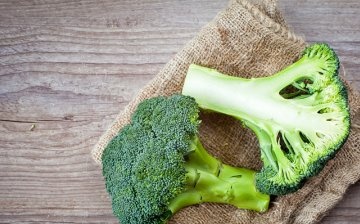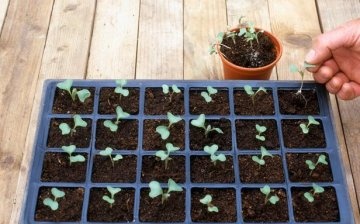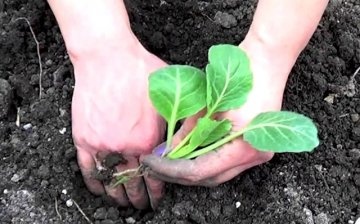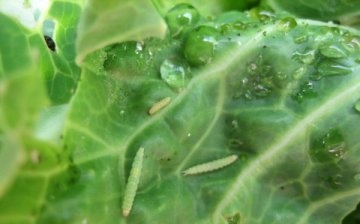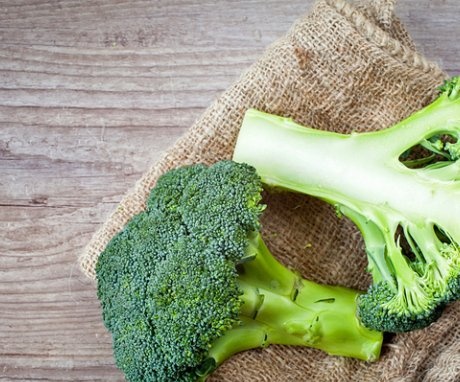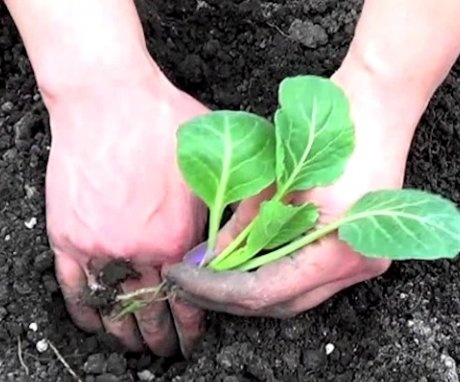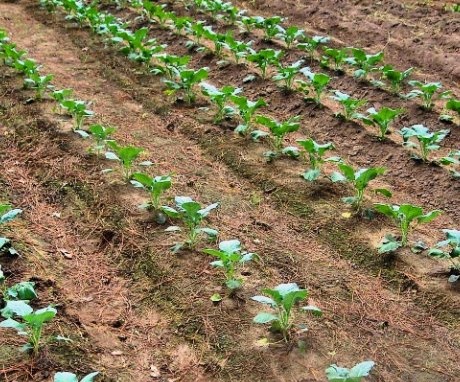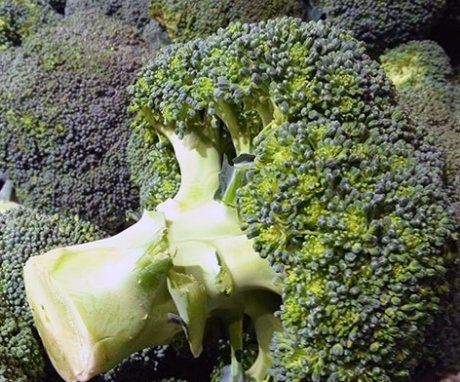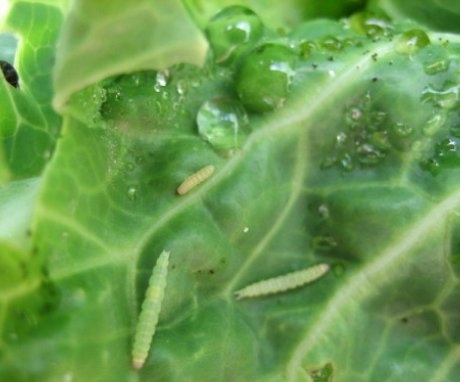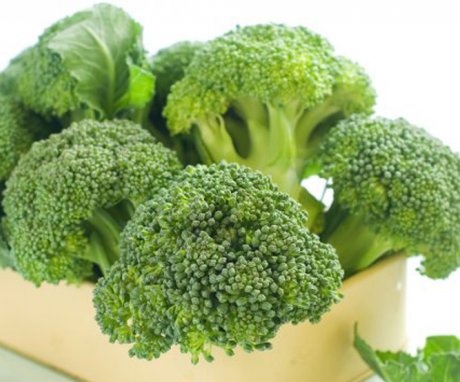How to grow broccoli: planting methods and proper care of seedlings
Broccoli This is a type of cauliflower or asparagus, which does not take much time and effort due to its unpretentiousness. With ease of care, this vegetable is the king of vitamins and minerals that strengthen the immune system and slow down the aging process. This cabbage is also called a vegetable of youth and longevity. Broccoli is cold and drought resistant. It easily tolerates short-term heat.
Content
- Characteristics of broccoli
- Soil preparation and planting seeds
- Transplanting seedlings into open ground
- Planting broccoli seeds outdoors
- Care Tips
- Harvesting and storage of crops
- Diseases and pests of broccoli
- The best varieties and hybrids of broccoli
Characteristics of broccoli
Broccoli also called asparagus cabbage or calabrese. This vegetable has about 200 varieties. Broccoli is an annual plant belonging to the cabbage family. The characteristics are most similar to cauliflower, but it is broccoli that has a number of advantages over all cabbages. This vegetable contains a protein similar in nutritional value to meat protein.
Features of the structure:
- Plant height reaches 80 cm.
- There are many peduncles on the tops.
- Each such peduncle is assembled from dense groups of small green or purple buds - these are future edible heads that are cut off to form yellowish flowers.
The vegetable is similar to Italian broccoli asparagus, which has more graceful shoots and small heads. The plant is native to the Eastern Mediterranean and Asia Minor. It quickly spread to the countries of France and Italy. In America, it began to be used only in the 20th century. Harvesting is carried out when the inflorescences reach 17 cm. Cabbage is capable of producing crops for several months, forming heads from the buds located on the sides.
Broccoli is rich in vitamins, minerals, amino acids, fats, carbohydrates and dietary fiber (fiber).
Low in calories, emphasizing its value for nutritionists. Broccoli is a hypoallergenic vegetable, included in the list of the first complementary foods for babies. Cabbage is able to neutralize free radicals, ease the course of kidney disease, remove excess fluid and salts from the organs. Regular use of broccoli strengthens bones, improves skin condition and blood composition.
Soil preparation and planting seeds
For growing seedlings you can buy ready-made soil mixture or prepare the soil yourself. To do this, sod land is mixed with humus and sand in equal proportions. Be sure to add ash, as a universal fertilizers for cabbage, and spill the soil with a lime solution.
Important! To avoid contamination and death of seeds, it is forbidden to take land or humus from the garden. A manganese solution is used to disinfect the soil. For cabbage, a site after legumes, cereals, cucumbers, carrots, Luke or potatoes... It is not recommended to plant after the cabbage family, tomato, beets, radish, radish and turnips... A crop can become infected with a black leg, which can ruin the entire future harvest.
Broccoli is grown in two ways: seed and seedlings.
Seeds for seedlings are sown from mid-spring, and seeds are sown in open ground in early June:
- To ensure uniform germination, high quality seedlings and good harvest performance the seeds it is recommended to pass through a sieve to sift out too small seeds.
- The selected seed is soaked in the stimulating solution for several days.
- Dried seeds are sown in containers or peat pots with prepared soil, watered, covered with polyethylene and placed in a warm place.
- Seedlings will hatch in a month.
Cabbage seedlings are grown at home or in the garden. At home, drainage is placed at the bottom of the container. The pots are placed in a room with a temperature of 10-16 degrees, providing diffused light. Under the influence of direct sunlight, premature tying of the heads will begin. Before moving to the garden, the seedlings are hardened. She is taken out into the street and the time spent in the open air is increased daily.
Immediately in the garden, seeds for seedlings are sown in April and covered with a film cover.
The shelter is not removed until the seedlings are strong. It is an excellent defense against voracious cruciferous flea beetles. Broccoli is cold resistant and can withstand temperatures as low as 7 degrees. Grown in soil seedling takes root better and adapts in a permanent place.
Transplanting seedlings into open ground
When 4-5 leaves appear on the seedlings, it can be transplanted into the garden to a permanent place:
- In the prepared place, holes are made according to the 50x50 scheme.
- If the land was not prepared in advance, then each hole is fertilized with ash and humus.
- When feeding broccoli during planting, care must be taken that the plant does not touch fertilizers, otherwise the bushes will take root poorly, and the harvest will be small and small.
- Seedlings drip to the first leaf and watered abundantly.
- After that, the soil should be mulched to facilitate maintenance. Mulch retains moisture longer, protects the soil from weeds and overheating.
Cabbage can also be grown in a seedless way. Seeds are sown in late spring - early summer. 3-4 seeds are placed in the prepared holes and watered abundantly. With mass shoots, you need to thin out the cabbage, removing the weakest specimens. The heads will begin to ripen in August. Also, this method helps to slip through the massive spring attacks of the cruciferous flea and broccoli can grow shoots before autumn frosts.
Technological features of cultivation:
- having planted cabbage in March, April or May, the harvest will be ready in June, July or August
- it is advisable to grow seedlings in peat pots or in the open field, because broccoli is negatively related to picking
- seedlings are grown for 40-50 days. It should not be kept longer, otherwise there is a risk of defective heads formation.
- the interval between bushes should be at least 35-40 cm and 50-60 cm between rows
- when forming leaves, you need to add nitrogen feeding, and during the formation of the head - in phosphorus and potassium
Planting broccoli seeds outdoors
Seeds can be sown directly into the ground when the temperature is above zero. Before the first shoots, cover with a film cover to preserve and provide heat.
Landing rules:
- Mandatory preparation of seed material. To do this, the seeds are kept in hot water (up to 50 degrees) for 15 minutes, and then dipped in cold water for one minute. Further, the seeds are kept in a growth stimulant solution for 12-24 hours, washed with water, dried and placed in a refrigerator for a day.
- The land is prepared in the fall by adding lime fertilizers, manure and humus.With the arrival of spring, the soil is fertilized with a mixture of urea, wood ash and superphosphate.
- Choose the right place and not plant after prohibited crops.
Features of growing broccoli:
- Watering should be abundant, preventing stagnation and drying out of the soil.
- Seeds germinate better in compacted soil.
- To protect against the caterpillar, the cabbage is covered with a fine mesh.
- You shouldn't plant your broccoli in the shade; it needs sunlight. In regions with hot climates, it is necessary to provide sufficient, but diffused sunlight.
- Select a new location annually for landing... It can be returned to its original place after three years.
- To obtain a high-quality harvest for broccoli, you need a constant care in compliance agrotechnics.
Care Tips
To take care of broccoli, it is necessary to regularly water vegetables, loosen the ground and remove weeds, regularly feed and fight diseases and pests.
The first top dressing spend two weeks after planting seedlings.
Mullein and urea diluted in water are suitable fertilizers. The second feeding is carried out during the formation of inflorescences, using nitrophosphate and boric acid (2 tablespoons each), which are diluted in 10 liters of water. Each bush needs 2 liters of solution. You can apply manure diluted with water in a ratio of 1: 4.
Harvesting and storage of crops
Harvesting begins 2-2.5 months after germination. You need to cut off the broccoli heads 2-3 days after they appear, otherwise they will begin to bloom, acquire a bitter taste and become tough.
A few days after the first harvest, new inflorescences will grow from the side shoots. Secondary heads are inferior in size, but retain all taste. Early varieties give two harvests per year, and mid-season and late ones - one at a time.
Advice! It is better to cut cabbage at dawn, then it retains its elasticity and is stored longer.
To increase the term storage the heads are dipped in cold water and wrapped tightly with cling film. Broccoli is not stored for long. Cabbage must be used within 10 days. In this case, the heads should be in a cool place. Cabbage tolerates freezing and preservation well.
Diseases and pests of broccoli
Broccoli is susceptible to many diseases and pests... The most common and dangerous are:
- Keela or black leg. The source of the disease can be soil or plant debris. Attacks young plants. Fungal and bacterial disease affects the basal neck, which turns black and dies, followed by the death of plants. It occurs with excessive soil moisture and sudden temperature fluctuations. The reason may be too thick landing... Chemicals are used to fight the disease, and the correct agricultural technology.
- Turnip mosaic. The causative agent of the disease is a virus carried by aphids. Signs of damage are black spots on the leaves and their deformation. There is a stop in the development of cabbage. Protection is provided by a high agricultural background, vector control and the selection of varieties with immunity against the disease.
- Alternaria Fungal disease that manifests itself as leaf spot. It develops rapidly in warm and humid weather. They fight the disease with insecticidal agents.
- Cabbage aphid. Small insects that feed on plant sap. In the process of their vital activity, the damaged leaves fade, curl and dry. To fight aphids use chemical and biological agents.
- Cruciferous flea. Dark bugs emerge from the topsoil in early spring. They attack plants throughout the season. For prophylaxis, seeds are treated, the remains of last year's plants are removed. Broccoli is treated with chemicals.
- Naked slugs. They intensify their activities at night. They are gluttonous and feed on leaves. Capable of completely destroying seedlings... Excess moisture contributes to their spread. Protection - chemical treatment.
The best varieties and hybrids of broccoli
Broccoli has a large number of varietal and hybrid forms that differ in head size and ripening times.
Early varieties:
- Tribute. Matures in 85 days. It is resistant to bad weather and forms medium-sized heads of cabbage.
- Vyarus. Heads of cabbage are small, soft-lumpy, weighing 110-130 grams. It actively forms secondary inflorescences.
- Comanches. You can remove vegetables after 90 days. The heads of cabbage are large and knocked down. Resistant to temperature fluctuations.
- Corvette. The hybrid form yields a harvest in two months. They tolerate negative weather conditions well. Has large ovaries. Suitable for freezing.
Mid-season varieties:
- Dwarf. Leaves with wavy edges. Heads of cabbage dirty green weighing 300 grams.
- Linda. Differs in large heads of cabbage weighing half a kilogram. After cutting the central head of cabbage, it is capable of giving up to six lateral heads.
- Fiesta hybrid. Forms vertical rosettes and tight green heads of cabbage. Does not produce secondary heads.
- Arcadia. Yields a harvest even in unkempt plantings. Forms dirty green large heads of cabbage, distinguished by their compactness. Frost-resistant variety.
Late varieties:
- Continental. Forms very hilly and tight vegetables up to half a kilogram.
- Lucky. Heads of cabbage weighing from 300 to 500 grams. The taste is delicate and pleasant.
- Marathon. The largest variety. The head reaches a weight of 700 grams. Delicious variety.
- Broccoli is a moisture-loving plant, but it should not be poured or allowed to stagnate. If the roots rot, then the cabbage will die. After heavy rain, hilling and additional application of a mixture of liquid mullein, urea and superphosphate are recommended.
Broccoli tolerates being close to white cabbage... The tall plant will not interfere with the development of both crops.
More information can be found in the video:




